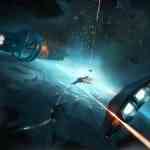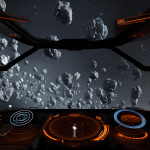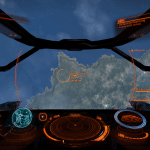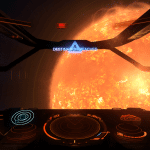Just as 2013 was the year of the bow (Tomb Raider, Crysis, etc.) and 2014 was the year of the broken-ass game (Unity, Master Chief Collection), 2015 is going to be the year we venture into space. With giants like Star Citizen and No Man’s Sky coming at some point hopefully in the next year, hype is at an all time high for exploring the stars. What better way to kick off the trend than with a super late 2014 release that sets the tone nicely for the journey to the dark unknown, Elite: Dangerous.
Elite Dangerous began with a wildly successful Kickstarter campaign that earned it nearly $3 million almost 2 years ago. As of December 16 it has officially reached its release date. Having played several space exploration games and being excited about some of the upcoming ones, I was really excited to see what Elite: Dangerous had to offer, but how well did it live up to my interest?

In its current state, Elite: Dangerous occupies the exact spot between the X series of games like X: Rebirth and where I’m hoping No Man’s Sky will end up. Elite: Dangerous is definitely much more approachable than X and does a better job giving the player some form of direction and suggested goals. It also nicely represents the vastness of space and how difficult it must be to travel from one location to the other, without being quite so tedious as X always has been. Both games have the basics like trading, exploration, and ship combat, but Elite: Dangerous offers them in a much more understandable and approachable way.
There’s still a lot of work to be done on these fronts. There are some tutorial elements to help you get going, but many aspects of the game are difficult to grasp at first. You can really see the beginnings of some really fantastic systems in this game, but they’re not there yet. I started out playing as a trade vessel and found an odd satisfaction in simply driving from planet to planet trying to flip goods for profit. I HIGHLY recommend taking a look at some external trading tools crafted by industrious fans of the game like Slopey’s Market Tool or Thrudd’s Trading Tool to help you figure out which goods to buy and where to sell them. It’s just unfortunate that external tools help so much with the trading instead of making the in-game tools a bit more useful.
I spent most of my time trading, with a little exploring on the side, but I also dabbled in ship combat. With my trading ship I was mostly on the defensive, but I still found combat pretty rewarding and fun. If you want to go for combat, you can choose to play on either side of the law by focusing on piracy or bounty hunting. There are quite a few neat tools at a combatant’s disposal too. I found myself on the receiving end of a pirate’s phase-shift disruptor, which basically ripped me out of FTL inter-system travel and into unexpected combat. Firing or fleeing needs to be a quick decision, and in my case I even tossed in a little but of ramming for good measure. The combat takes a little getting used to, but once you get the hang of it you’ll find yourself sucked in by the dog-fighting nature of it.
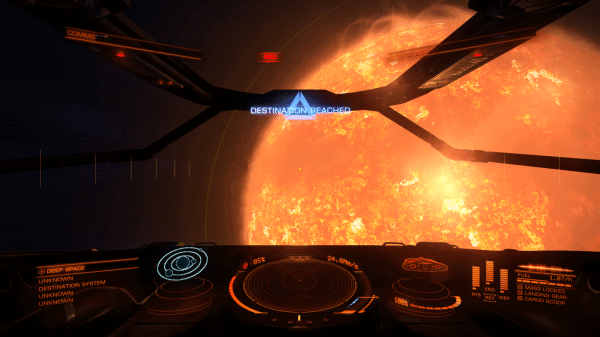
Something I always found frustrating about the X series was the lack of direction. Elite: Dangerous solves this somewhat with the bulletin boards found on each station. These boards are where you can pick up bounties, engage in trading contracts, and even do a little dirt. I politely declined the offer to participate in human trafficking, but the choice was there for me if I wanted it. I think Elite: Dangerous needs to go a little further with this system for the game to be fun for the average player long term. The bounties offer small nuggets of purpose to an otherwise make-your-own-fun sort of game. It would serve the game well to chain several of these together into some semblance of quest lines.
Even giving the player some form of randomly generated goal would be nice. If I started the game and chose to focus on exploration, the game should have said “Okay, your goal is to find and explore the star systems of the ten largest stars in the galaxy. GO!”. Even a random and arbitrary goal like that gives me something to work toward. It’s specifically that need for some form of goal, and the actual landing on a planet, that gets me really excited to see where No Man’s Sky will go from the relatively strong foundation put forth by Elite: Dangerous.
There’s definitely a strong core game principle here, and all my problems with it are ones that can be solved with some continued developer TLC. Flying your ship feels good, the galaxy accurately conveys an immense sense of scale, the use of real life stars and planets adds an amazing sense of wonder, and the trading and combat systems have strong cores. Overall, Elite: Dangerous is really cool, but mostly as a tease of what it could be. I genuinely hope the developers continue to support it as they have thus far, because this game is just a few more levels of progression away from being truly incredible.
***This game was reviewed on the PC and a code was provided by the Publisher***


